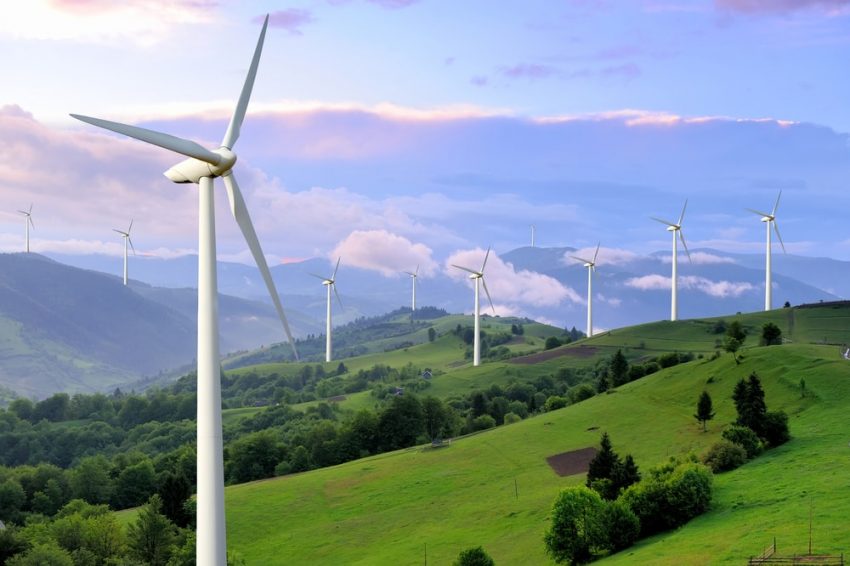The wind power it is obtained from the wind. This is possible because air currents have kinetic energy. It is a form of inexhaustible (or renewable) energy. For instance: wind turbines, windmills, sailboats.
The Kinetic energy It is the energy that moving objects have. Therefore, energy cannot be obtained simply from the air, but from the air when it moves, that is, the wind. This means that kinetic energy can only be harnessed where and when the air is moving. For this reason, wind energy is inconsistent in time and space.
Wind energy has been used for different purposes since the 7th century, mainly in mills (see examples). However, it has been used long before (approximately five thousand years ago) in sailing boats, as an alternative to oars.
To obtain electrical energy from wind power, small wind turbines (micro-wind) since the first half of the 20th century in homes far from the towns, since it is a form of energy independent of the networks and was developed prior to other forms of renewable and independent energy (such as solar energy).
Currently, the countries that have wind turbines (that is, they use wind energy to obtain electricity) are Germany, Spain, the United States, India, Denmark, China, Italy, the United Kingdom, Sweden, Italy, France, Brazil, Mexico, Argentina, Chile, Nicaragua, Honduras, Uruguay and Costa Rica.
Advantages of wind energy
- It is a kind of inexhaustible energy.
- Since it does not use combustion, it does not produce polluting waste (with the exception of the cases in which thermal power plants are used)
- It can be installed in spaces not used for other functions, such as desert or non-cultivable areas, or even in the sea.
- It can also be installed in areas used for other purposes, such as fields for crops or livestock.
- It generates a large number of jobs.
- Its installation is quick, not exceeding 9 months even for the largest wind turbines.
- The electrical energy obtained can be integrated into the electrical network, reducing the use of other forms of energy.
- Combined with other forms of energy (for example solar energy) it offers a good source of electrical energy to homes located in areas far from power grids.
Disadvantages of wind energy
- Due to its inconstancy, it cannot be the only source of electrical energy.
- Voltage dips: sudden voltage drops that require wind turbines to be disconnected from the power grid to avoid damage.
- Wind turbines cannot operate when the wind reaches a speed greater than the maximum power of the device.
- If they are combined with thermal power plants, carbon dioxide, a polluting substance, is emitted.
- Wind farms produce a natural impact many times in protected areas. However, this impact is minimal.
- They can affect the movements of migratory birds, which take advantage of the same currents as wind turbines.
- Visual impact: when the sun is close to the horizon, the blades generate alternating shadows, causing a flicker called the “disco effect”. This alternation of light and shade increases stress levels in the population.
Examples of wind energy

- Wind turbines. They are the most widely used way to obtain electricity from wind power today. These devices look like windmills (but much higher) with three white blades, which are moved by the kinetic energy of the wind. The movement of these loops is transformed by a generator into electrical energy. These large wind turbines are called horizontal axis and were created in 1980 in Denmark. Due to the high cost of their construction and technology, they are not used in individual homes, but in wind farms that allow energy to be integrated into regional or national networks. But there are also vertical axis wind turbines, which can be placed closer to the ground, which facilitates their maintenance and installation. Wind turbines that are used for private houses are called micro-wind. They can be used independently (in homes away from electrical networks) or join the electrical network to reduce electrical costs.
- Windmills. Unlike wind turbines, mills are not used to generate electrical energy but to grind grains (as the name implies). There are different types of mills that can use energy from water (hydraulic mill), from animals (blood mills), or even small hand mills (such as coffee grinders). Windmills are larger and the movement of the blades (due to the kinetic energy of the wind) in turn moves pairs of circular stones (millstone) that turn the grain into flour.
- Pump mills. They are called “mills” because of their resemblance to windmills, but their function is not to grind, but to extract underground water to the surface. The movement of the blades, thanks to a set of gears, becomes a reciprocating movement that allows the water to be extracted. They are commonly used in rural areas to facilitate the irrigation of crops and to increase the availability of water for consumption by animals.
- Sailboats. They are boats that use sails to capture the energy of the wind and use it to move. They were the first means of transport used to travel long distances. Currently they are still used for recreational and sporting purposes. Sailing (name of the sport with sailboats) has been an Olympic sport since 1900.
Other types of energy
| Potential energy | Mechanical energy | Kinetic energy |
| Hydroelectric power | Internal energy | Caloric energy |
| Electric power | Thermal energy | Geothermal energy |
| Chemical energy | Solar energy | Sound energy |
| Wind power | Nuclear energy | Hydraulic energy |
